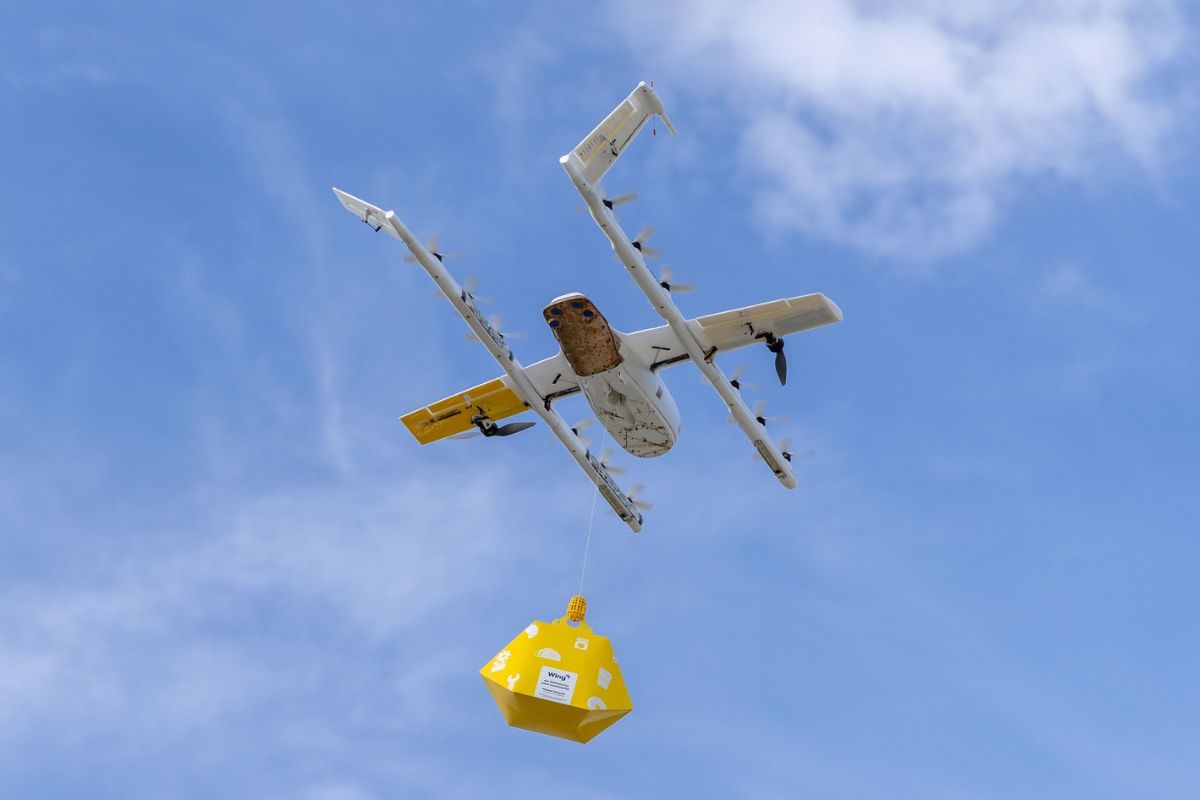In Brisbane, Australia, a food delivery drone run by an Alphabet company called Wing crashed into power lines and caught fire. Because of this, energy company Energex shut down the network to deal with the problem. This left thousands of people without power. ABC News and The Age say that about 2,000 people were without power for about 45 minutes, while 300 people were without power for three hours.
Energex spokesman Danny Donald told The Age that the drone “landed on top of 11,000 volts, and while it didn’t cut power, there was voltage tracking across the drone, and the drone caught fire and fell to the ground.” The drone made a “precautionary controlled landing” yesterday and landed on an overhead power line, a Wing representative told the publication. The company said that it then told Energex about what had happened. “Two hours later, when they were trying to get them back, the power went out in the area,” the spokesperson said. “We’re sorry if we caused any trouble. We’re going over what happened yesterday right now.”
“The drone caught on fire and fell to the ground.” Donald told ABC News, “I’ve never seen anything like this before. It could have just been a problem with the equipment. It may have been human error.” He also said that the network was not damaged and that Energex fixed the problems quickly. “When the crew got there, the meal in the drone’s delivery box was still hot,” said Donald.

“Fifteen years ago, we asked parents to be careful about giving their kids kites for Christmas and where they flew them,” said an Energex spokesperson. “We are now asking parents to be very careful about where their kids fly their drones.”
Wing’s drones don’t land to make deliveries. Instead, they use a pulley system to drop packages to customers.
The drone wasn’t flown by kids, though. It was flown by Wing, which is a part of Alphabet, the company that owns Google. Wing’s drones can fly both as fixed-wing planes and as hovering copters. They can fly by themselves to deliver food and drinks on short trips that usually take less than 10 minutes. The company is currently active in three countries: the United States, Finland, and Australia. However, it has been most successful in the suburbs of Australia.
As of August of last year, Wing delivered to about 100,000 customers in Brisbane, where the crash happened. As of March of this year, Wing had made about 200,000 deliveries. Wing says that drone deliveries work well in the suburbs because there are a lot of customers there, it’s easy to fly, and delivery companies don’t serve the suburbs as well as they do cities.
Advocates have high hopes for drone deliveries, but they haven’t been met yet.
Drone deliveries have been talked about a lot over the past 10 years, but they haven’t grown as fast as companies like Amazon said they would. Success has been found instead in more focused applications, like Zipline, which delivers small but high-value items like blood and medicine to rural areas.
Please Bookmark our Nog Magazine.com site for the latest News. check our Gaming and technology section for more related updates.